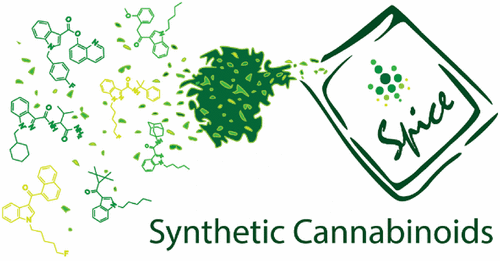This Review covers the background, pharmacology, adverse effects, synthesis, pharmacokinetics, metabolism, and history of synthetic cannabinoid compounds. Synthetic cannabinoids are a class of novel psychoactive substances that act as agonists at cannabinoid receptors. This class of compounds is structurally diverse and rapidly changing, with multiple generations of molecules having been developed in the past decade. The structural diversity of synthetic cannabinoids is supported by the breadth of chemical space available for exploitation by clandestine chemists and incentivized by attempts to remain ahead of legal pressures. As a class, synthetic cannabinoid products have a more serious adverse effect profile than that of traditional phytocannabinoids, including notable risks of lethality, as well as a history of dangerous adulteration. Most synthetic cannabinoids are rapidly metabolized to active species with prolonged residence times and peripheral tissue distribution, and analytical confirmation of use of these compounds remains challenging.
Overall, the emergence of synthetic cannabinoids serves as a noteworthy example of the pressing public health challenges associated with the increasing development of easily synthesized, structurally flexible, highly potent, psychoactive drugs.

This article is cited by 11 publications